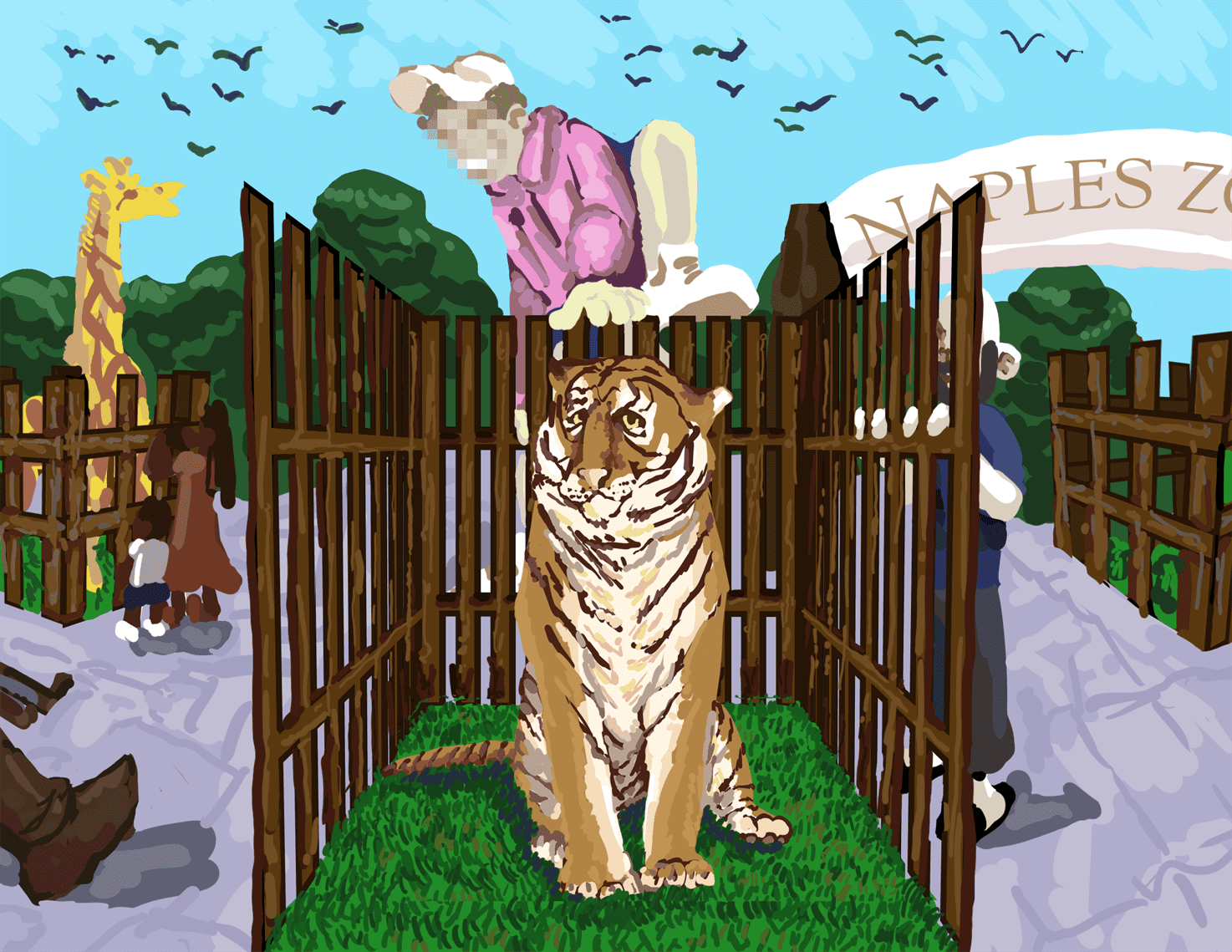After breaching a safety fence, Naples Zoo worker River Rosenquist had a vicious encounter with Malayan tiger, Eko.
According to reports, Rosenquist had scaled the enclosure’s 4-foot, 5-inch fence to either pet or feed the tiger, unbeknownst to the rest of the staff. This lapse in judgment has earned Rosenquist a mutilated arm and cost the life of an innocent tiger.
Evidently, Rosenquist’s approach toward the animal frightened it, causing its ferocious attack that left Rosenquist injured and another victim, Eko, dead.
Eko supposedly had clamped onto Rosenquist’s arm and would not let go. He was later shot by a deputy, in an effort to save Rosenquist.
While the safety of the workers is important, so was Eko’s life.
Like zoos, aquariums come with a plethora of their own problems. Just this past Sunday, Mystic Aquarium in Connecticut announced the death of two out of five whales that had been transported from Canada.
According to an article in The Guardian, the beluga whales had been rescued from an overcrowded aquarium in Canada and were unfortunately in poor health to begin with. However, the relocation from Canada to the U.S. may have worsened their physical state due to stress.
The incident once again prompted many animal activists to call for the release of fish and wildlife kept in aquariums. However, researchers claim that having been born in captivity, most aquarium creatures are unequipped to survive on their own.
These latest deaths serve as a reflection of how human error frequently plays a part in not only the demise of animals in captivity but the overall cruelty that continues to ensue within such establishments.
A life behind bars is arguably worse than a death sentence. We are no strangers to this concept, as our judicial system and prisoner records will clearly show.
Yet zoos and aquariums, places geared toward “family fun” and “entertainment,” seem to harbor a similar atmosphere without the negative connotation.
The synthetic zoo and aquarium enclosures are built to somewhat resemble real ecosystems. The reality is they hardly do.
An article from the BBC discusses some glaring issues many zoos and aquariums have. These include lack of space, little natural social and companionship structures and close proximity with humans and species from other habitats. Reliance on human care leads to a destruction of their natural agility and physical capabilities.
These aforementioned issues in turn can be linked to depression, lack of nourishment and poor bodily functions in captive animals.
In zoos and aquariums, animals simply cannot hunt, run or swim, nor can they experience the same trials, tribulations and joys as they do in their natural habitats. Animals being enclosed prevents them from reaching their full potential.
Yes, they are technically “safe” behind man-made walls. However, being locked up, animals are stripped of their natural environment and become overly docile, or as in the unfortunate case above, increasingly aggressive.
While zoos and aquariums can have educational purposes, they are geared more toward entertainment. This is evidenced by the animal shows, food stands and fun rides provided for those visiting.
If humans are looking to educate themselves on wildlife, they may do so by establishing proper animal sanctuaries which offer space, wild lifestyles and sufficient separation between the animals and humans while providing controlled tours.
In addition, we can simply turn on Animal Planet and witness informative and immersing documentaries.
Let’s be real: zoos and aquariums are not as vital to humans as freedom is to the suffering prisoners within them.
While there is not much that can be done for animals still trapped behind bars and glass walls, we can strive to dismantle current zoos and aquariums, or at least prevent the construction of future ones.
By replacing them with monitored wildlife sanctuaries and focusing on rehabilitating animals with the intent of releasing them back into the wild, we can help prevent the cruelty these creatures continue to endure.
Sign this petition to abolish zoos and aquariums now.



